One of the most emotional moments when you start surfing is the choice of the board, because it will be something that determines how you will move over the waves. Now, in the market you have a lot of types of surfboards from which you can choose and although at first glance it may seem simple, when you enter the store and look at all the variety, sizes, shapes and implements and lets be something so easy..
Some surfboards are faster, others are easier to handle, lighter, flashy, stable, all seem useful for your purpose, but we advise you not to make that decision impulsively. Another important detail to consider is that surfboards evolve constantly and that is why you will find more and more models that are made according to the level and conditions of the surfer. You can see this complete guide to learn surfing with us.
To help you in this selection process we wrote the following post about the different types of surfboards you will find, maybe you already know some of the most popular ones such as shortboard, longborad and la fish, but when you finish reading the next post you will handle more information that will allow you to decide on which board to choose.
What is a Surfboard?
The surfboard is the fundamental piece of the sport and although it seems very simple it has special details that will determine how you can surf the waves.
The size of the boards varies from 4.8 to 9 inches and the traditional materials for its elaboration are wood (Acasia, Balsa, Paolownia, Ishipingo or Mahogany), synthetic like fiber, but the most common are those covered with fiber or epoxil material and in its interior Foam (a material similar to cork but with the finest grain and easier to give the desired shape).
You can find them in a wide variety of designs and colours, as well as opting for a customised board.
All Types of Surfboards
The different types of surfboards can be found grouped in categories, some models have their advantages and disadvantages. Below we summarize all the types of surfboards you can find in the sports shops:
Fish and Retro Fish
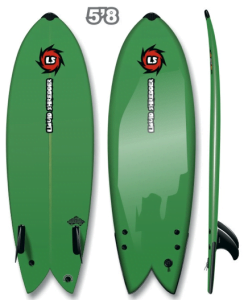
The Fishboard in expert opinion is defined as the “perfect choice” for surfing small or low quality waves.
It is rounded and small, usually has a kind of swallow tail and two keels, for its small size are usually very maneuverable, but we do not recommend using it in waves with height from one and a half meters.
The Retro Fish board is thick, short and wide at the front. Its name is due to the fact that it was designed in the seventies, considered as the “golden” era of surfing. Like the Fish it has a swallowtail but can be included from one to four fins.
Advantages:
- It’s easy to maneuver in the water.
- It glides very well on low strength waves.
Disadvantages:
- It doesn’t work well in big or hollow waves.
- Not recommended if you have little experience.
SUP (Stand Up Paddle)
Do you want to just “walk on the sea”?
That board is the most appropriate for a walk in the water or surfing in soft waves, you can always go standing up because it is long and gives you great stability.
Advantages:
- You plan very well on low strength waves.
Disadvantages:
- They are somewhat difficult to maneuver but with a flexible paddle you can take the momentum and control where you are going with the board.
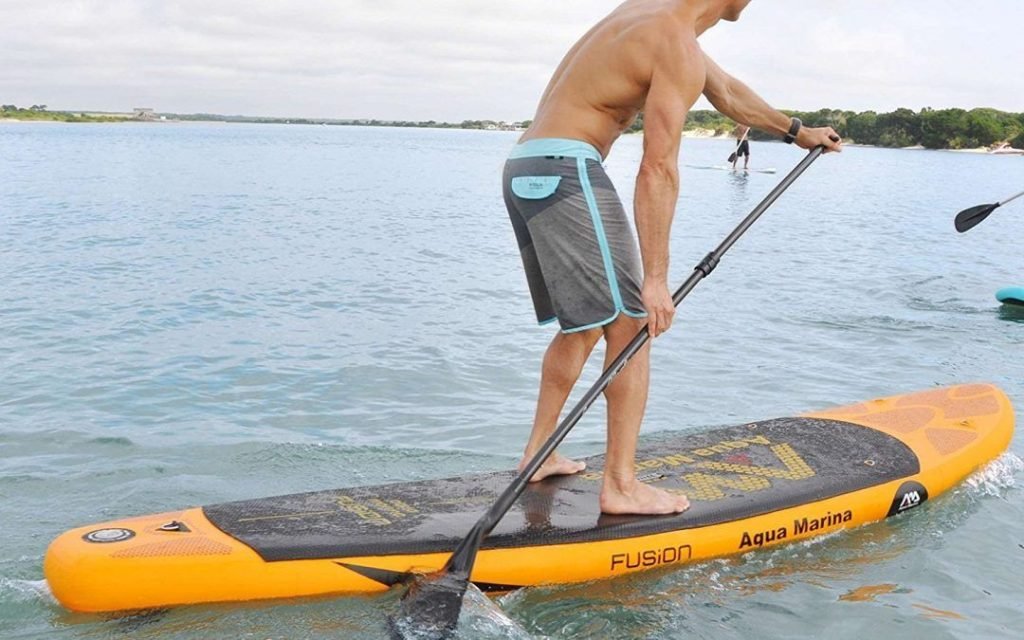
Shortboard
They are the most used boards, they are fast and although they work for all types of waves, they are more suitable for medium or big waves. They measure 5.5 to 6.5 inches and surfers like Bob Mc Travish or Nat Young use them instead of the typical longboards.
You should not buy it if you are just starting to surf, it is a more technical board and you will need an average level to manage it.
Advantages:
- It is a very manageable board because of its short length, narrow edges and its rocker.
- Ideal for advanced maneuvers such as aerial, snaps, cutbacks, among others.
- It is easier to make turns.
- The rocker of the board makes the rowing process more difficult because it drags more water during the advance.
Disadvantages:
- You’ll have a hard time catching waves.
- It requires a lot of experience because you need to turn (on its edges) and get close enough to the wave’s energy source.
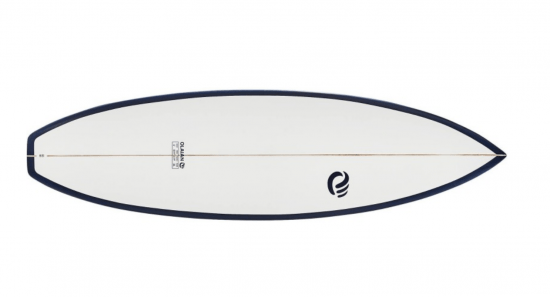
Tow-in
They are also referred to as “towed”. They are small and have little room to balance, but have an accessory to keep it fixed at your feet, this allows you to perform some maneuvers and stay stable in big waves.
Designed to propel you around on a watercraft or other small motorboat, it is the smallest of the surfboards.
Advantages:
- It allows you to take advantage of the great speed that the jet ski gives you.
- It is ideal for surfing very big waves.
- It is easier to make turns.
Disadvantages:
- Requires a medium or high level of experience to handle it.
- You need a person to tow you either by jet ski or motor boat.
- If you don’t surf giant waves the board is useless.
Bodyboard and han-gun
If you’re looking for a short board and want to test your skill or ability, this is the one we recommend. They were designed so that you can “ride” the board in a kneeling position or simply lie on your chest and place it at the lowest point of gravity.
Advantages:
- You can have a very fun and exciting time riding the waves.
Disadvantages:
- Because they are short and wide, they require additional momentum and to achieve this you must use good flippers.
Longboard and Malibu

Longboards were inspired by the famous “Hawaiian logs” and are considered the first surfboards. Some call them “boards” or “longs” because they are large (from 9 feet) and have a rounded tip.
They are specially designed for small or medium waves, although if you are an experienced surfer you can also use them for big waves.
Another board that you will find frequently in sports shops is the Malibu. This big rounded tip board, besides being smaller and easier to maneuver compared to the Longboard, you will also be able to float, paddle easily and stay stable.
Advantages:
- You can perform special moves like Hang Five, Hang Ten and Drop Knee.
- Because of its large size you have a surface that allows you to glide and float more easily on the water surface.
- It provides great stability and therefore is ideas for you to learn basic techniques.
Disadvantages:
- If you want to participate in a surfing competition it is difficult to pass the series with this type of board.
- Because of its length it is more difficult for you to move this board.
Gun (Weapon)
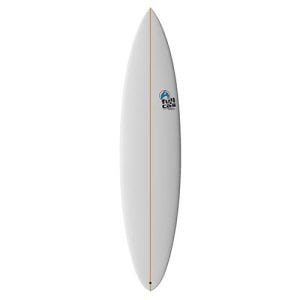
You can recognize a Gun board because they are very tall (8 to 11 feet) and fast, their tip and tail are sharp, giving them an elongated appearance.
Designed so you can surf very big waves with maximum stability during the ride. It will be one of the most appropriate for you if you are an expert surfer.
Advantages:
- By providing greater speed in the paddling help anticipate to catch the wave “of the most important things in surfing is a good paddling” you will enter with speed and will be easier to pass the difficult sessions of the waves.
Disadvantages:
- You can only use it if you already have the level of surfing expert.
Surfboards according to their use
The use of the tables is very varied but basically you can classify them according to the type of waves you want to surf.
Surfboards for big waves.
It takes a lot of experience and technique to surf this kind of waves. The types of boards used are the Tow in, Pin Tail and Gun. For this type of waves you must have intermediate knowledge you can see our intermediate level surf camp in Lanzarote.
Surfboards for medium waves.
They represent the largest group because these are the type of waves you will find most often. It is recommended that you use a Shortboard, Fish, Retro, Evolutionary, Malibu, Longboard, also a Round Tail because of its rounded finish that gives you better grip on the wave.
Surfboards for small waves.
In this mode you can find slightly different boards. For example, the Square Tail will be more suitable because of its straight cut, also the fish type like the Swallow Tail.
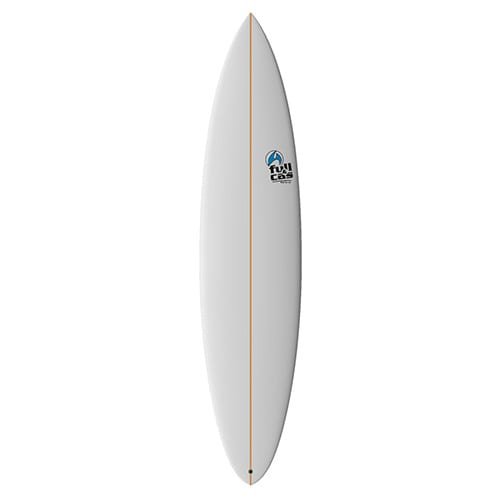
Surfboards for beginners
To select the board you need when you want to start surfing it is important to consider age as a first reference, because for adults they design taller, wider and thicker boards.
The evolutionary boards will be a highly recommendable option for your first approaches to the water because they have an intermediate size that makes them more stable, as well as a slightly more rounded front tip that makes them easier to handle.
Among other more recommendable models we suggest some:
- Easy Rider Next Surfboards: Model recommended if you prefer your first board to be made of fiber. It is perfect to practice your first maneuvers.
- Evolutionary Single Quiver Board: If you want to save a little on your first surfboard, the IWAEVO model in this series will only cost you 80 euros, including box and fins. This board also allows you to reach the level in the shortest time possible because it guarantees stability and ease of take off, also because it is wide in the front.
- Mobyk Trytipe (cork): This board is of high quality and you will pay a very accessible price, it is safe if you want to buy it for your children.
Apart from the size it is important the liters of floatation of each board (height x width x thickness) depending on your weight you will need certain liters, our recommendation, before buying go to a surf school and rent a board for a while, when you find one with which you feel comfortable and see that you surf well, look at the measures written at the bottom of the board (eg: 7’2 x 21 x 3) and buy one with those measures, for example in our surf school you can rent a surfboard for a week and go changing it every day.









